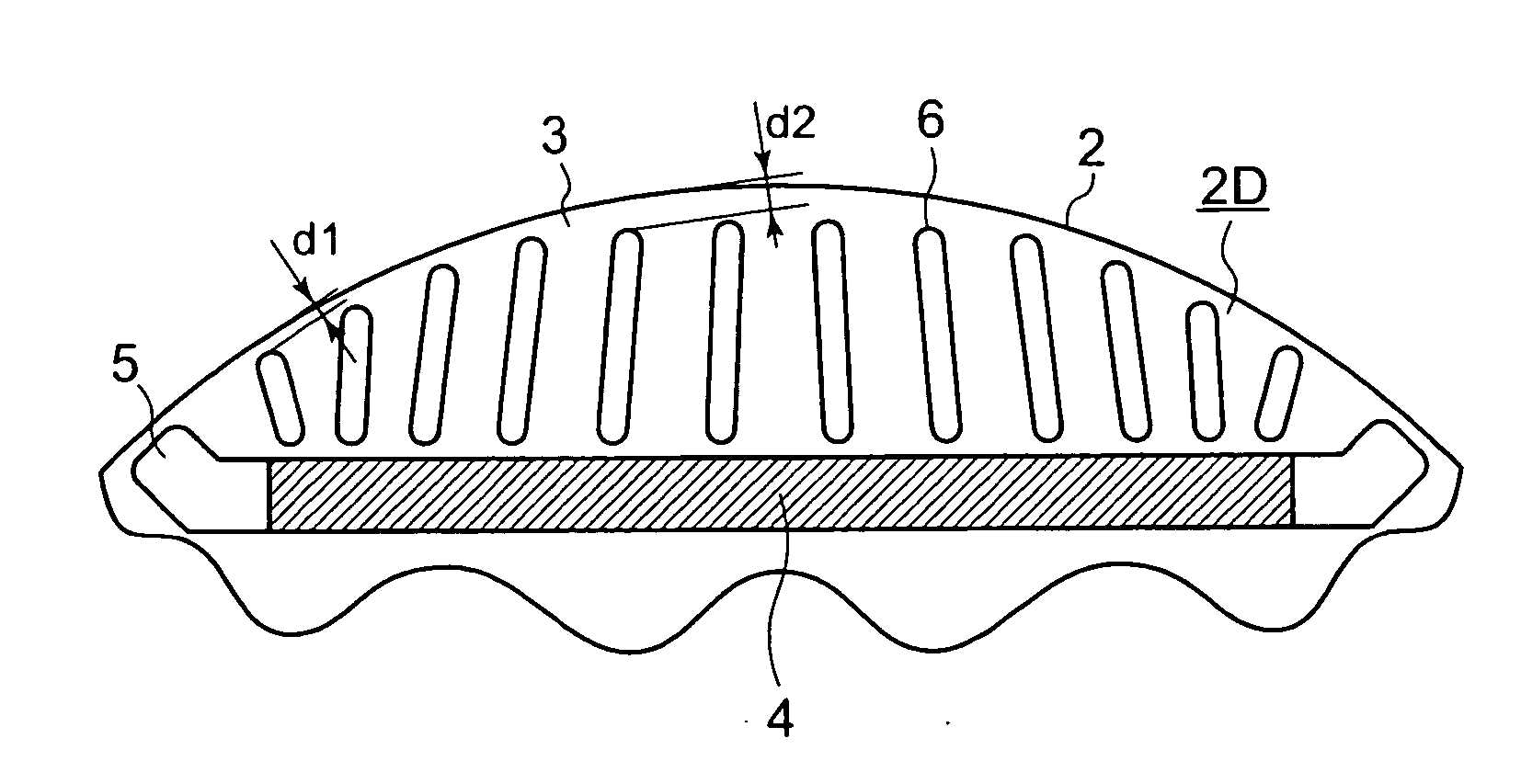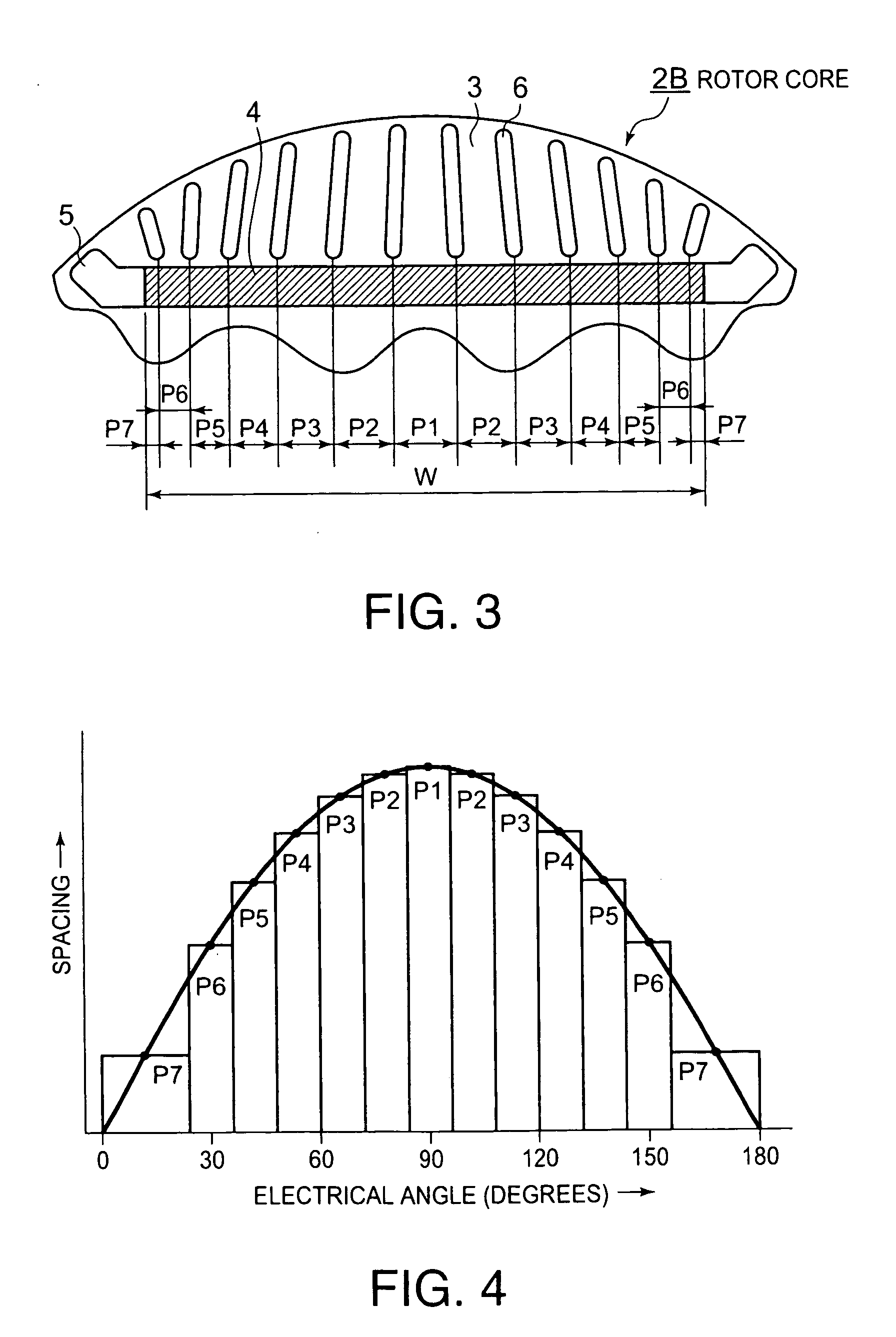Permanent magnet motor
a permanent magnet, magnet technology, applied in the direction of dynamo-electric machines, magnetic circuit rotating parts, magnetic circuit shape/form/construction, etc., can solve the problems of increasing vibration, increasing noise, and high cogging torque, so as to improve the magnetic flux distribution, reduce the reaction flux of armatures, and high efficiency
- Summary
- Abstract
- Description
- Claims
- Application Information
AI Technical Summary
Benefits of technology
Problems solved by technology
Method used
Image
Examples
first embodiment
[0029]FIG. 1 is a side view showing an end of a rotor of a permanent magnet motor according to the present invention as viewed along the insertion direction of a rotating shaft before the rotating shaft is inserted. In the figure, the same components as the conventional motor in FIG. 11 are denoted by the same reference numerals as the corresponding components in FIG. 11, and description thereof will be omitted. A rotor 2 consists of a rotor core 2A and a rotating shaft (not shown), where the rotor core 2A is a generally pillar-shaped stack of steel plates cylindrical in outline.
[0030] The rotor core 2A has permanent-magnet-holding slots 5 formed at locations corresponding to sides of an approximately regular quadrangle near the outer circumference of the rotor core 2A. A permanent magnet is buried in each of the permanent-magnet-holding slots 5. A plurality of radially elongated slits 6, for example, ten slits, are arranged apart from each other along each of the permanent-magnet-h...
second embodiment
[0036] Thus, the second embodiment reduces armature reaction flux using the plurality of slits, further improves the magnetic flux distribution in the outer core, and thereby provides a highly efficient permanent magnet with reduced noise and vibration.
third embodiment
[0037]FIG. 5 is a side view showing an end of a rotor and stator of a permanent magnet motor according to the present invention. In particular, it employs, as the rotor 2, a rotor core 2C similar to the rotor core 2B shown in FIG. 3. The spacings P1 to P7 at the radially inner end of the slits 6 are determined here assuming that the rotor 2 has 2n (=4) magnetic poles while a stator 1 has 3n (=6) teeth each of which has a conductor 7 wound in a concentrated manner, where n is a positive integer (2 in this case) and assuming that sides of the permanent magnets 4, when contracted toward the center, correspond to the base of the sine wave shown in FIG. 4.
[0038] If there is a relationship of 2n:3n between the number of rotor (2) poles and number of stator (1) teeth, angular intervals between the poles of the rotor 2 are smaller than angular intervals between the teeth of the stator 1, and thus the teeth in each phase of the stator 1 cannot receive all the magnetic flux from one pole of t...
PUM
 Login to View More
Login to View More Abstract
Description
Claims
Application Information
 Login to View More
Login to View More - R&D
- Intellectual Property
- Life Sciences
- Materials
- Tech Scout
- Unparalleled Data Quality
- Higher Quality Content
- 60% Fewer Hallucinations
Browse by: Latest US Patents, China's latest patents, Technical Efficacy Thesaurus, Application Domain, Technology Topic, Popular Technical Reports.
© 2025 PatSnap. All rights reserved.Legal|Privacy policy|Modern Slavery Act Transparency Statement|Sitemap|About US| Contact US: help@patsnap.com



